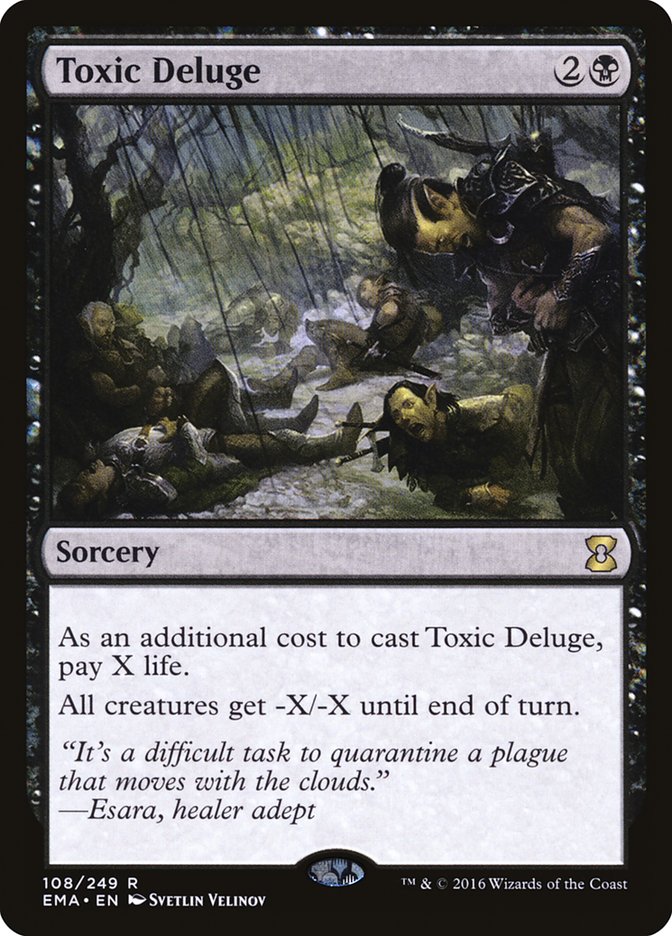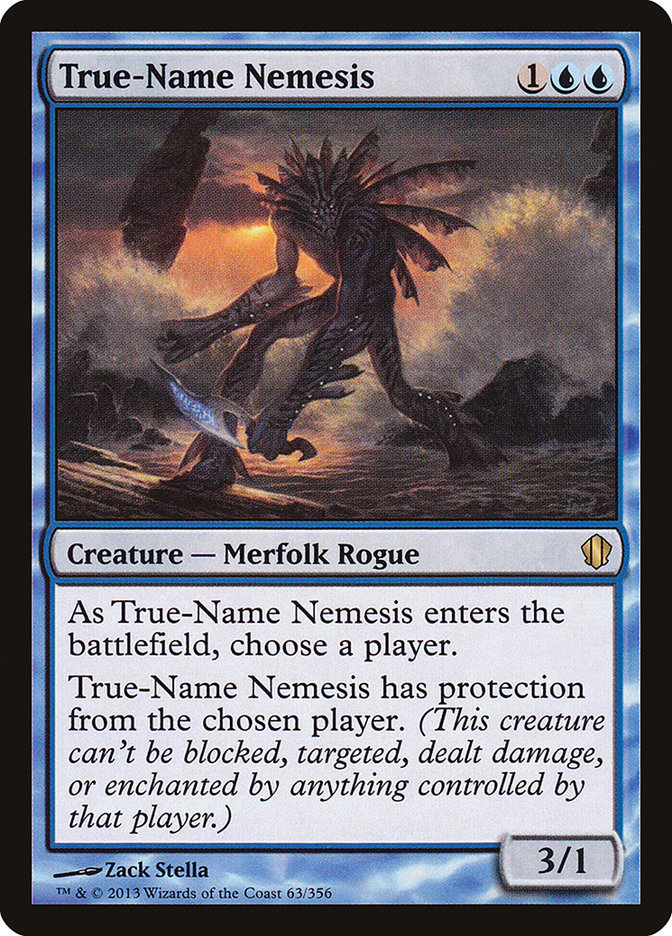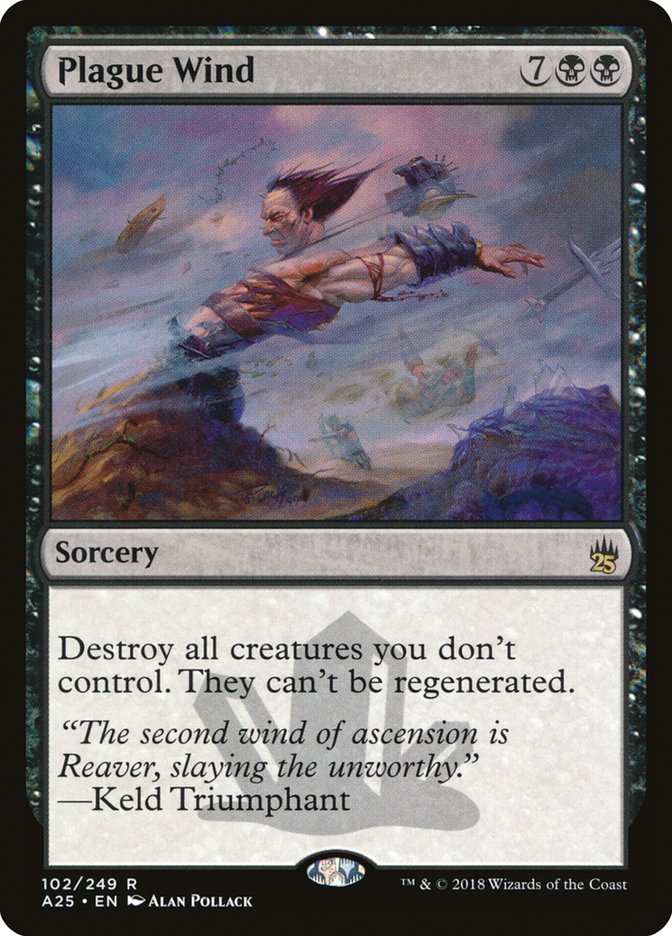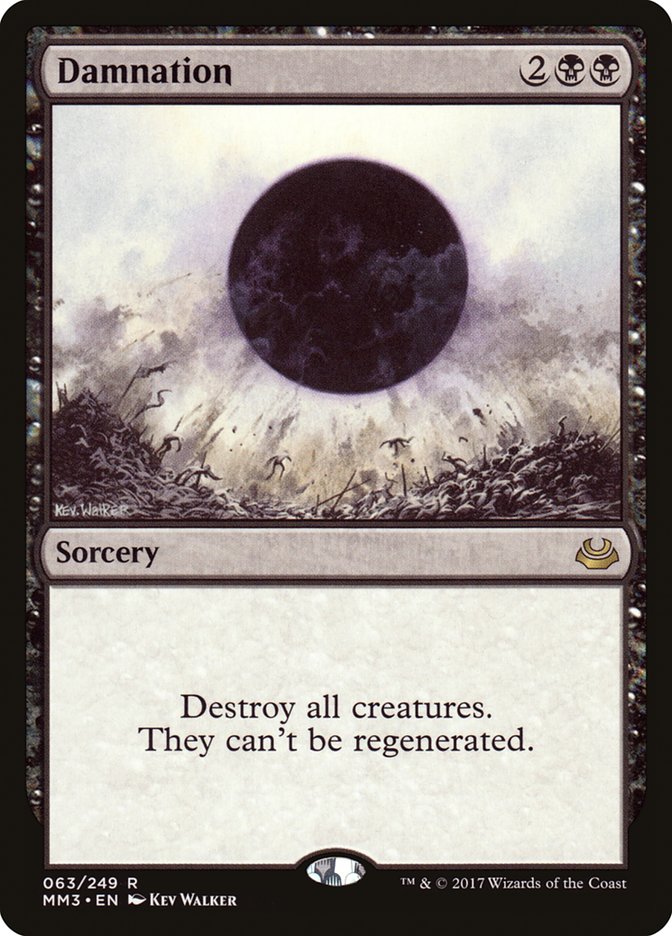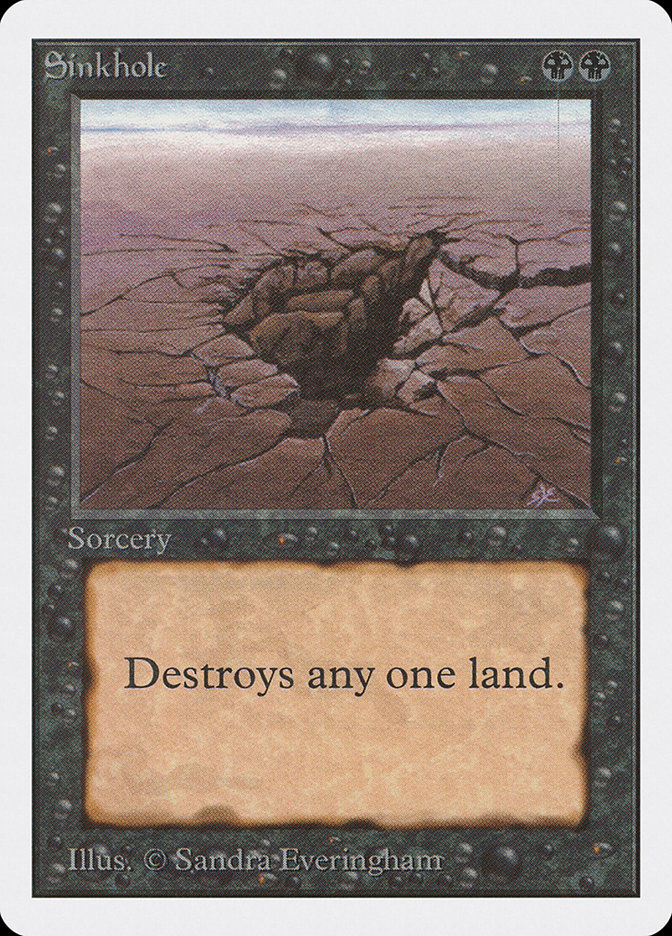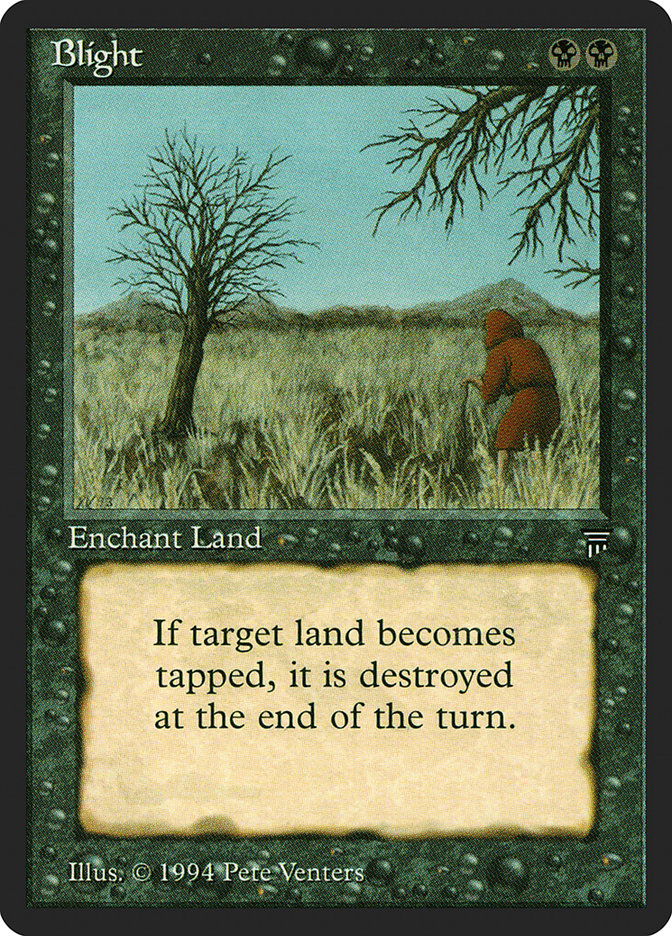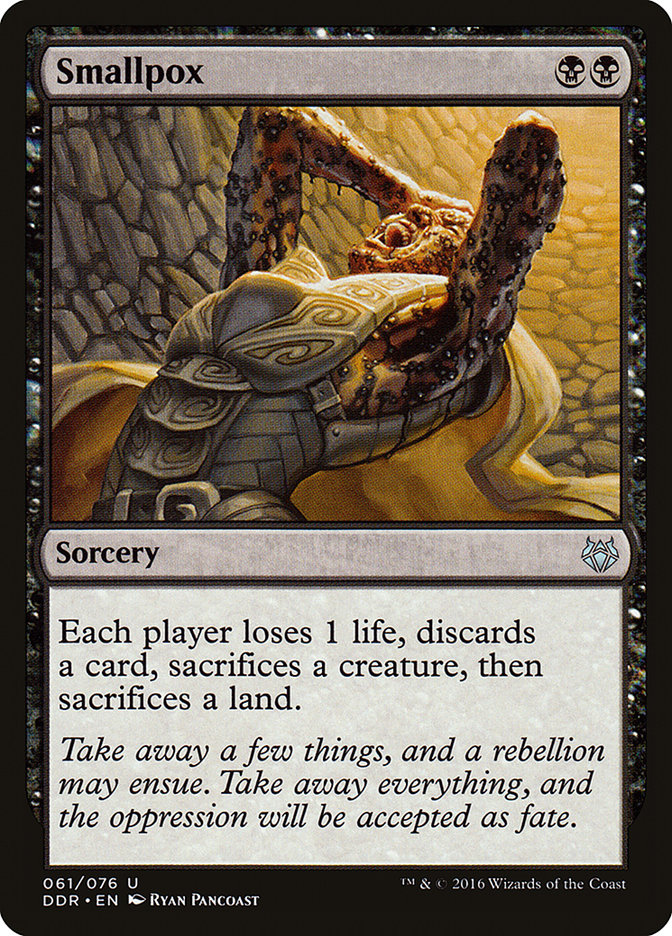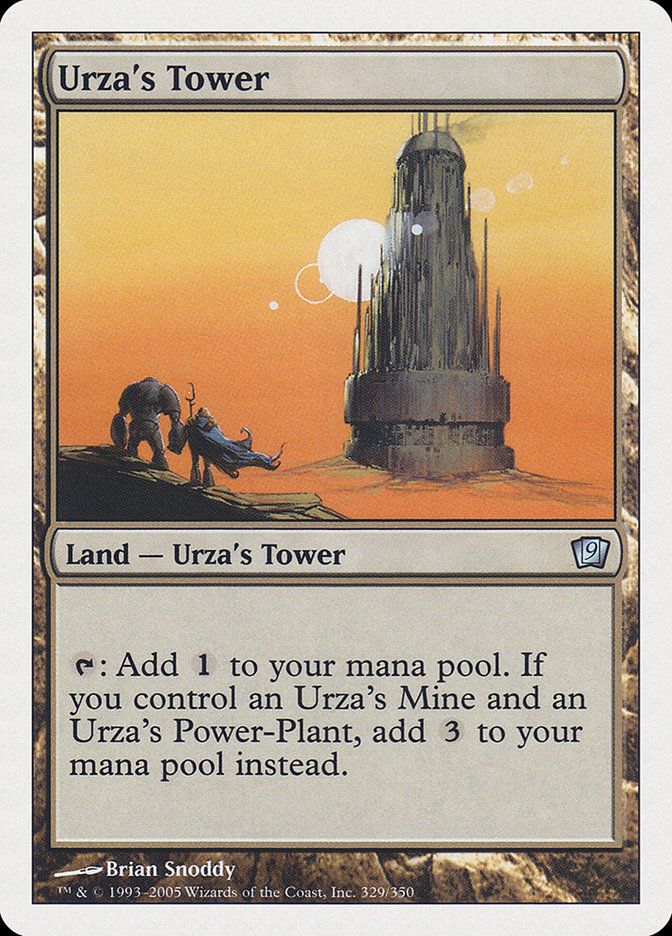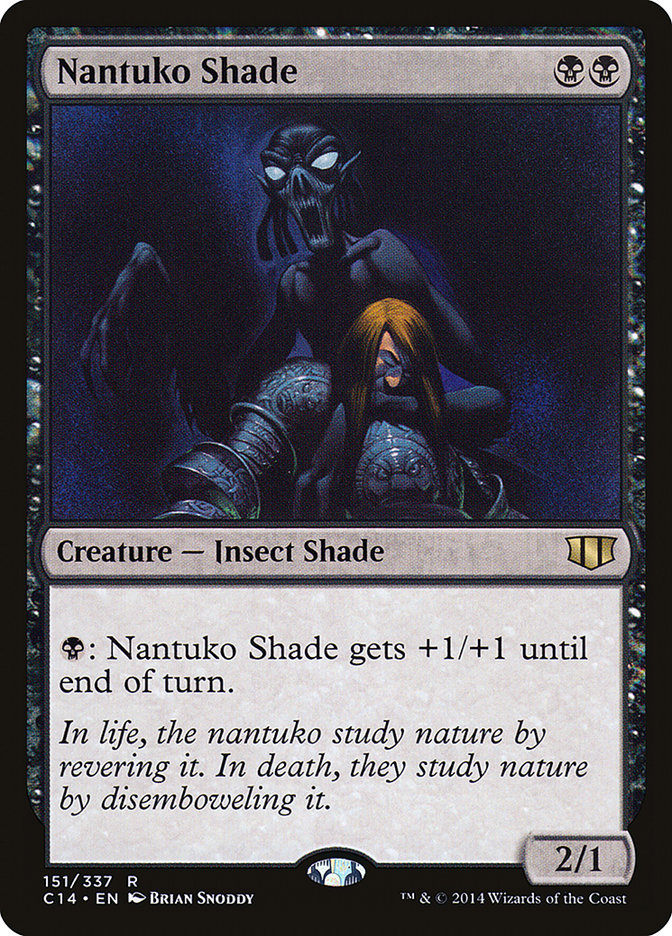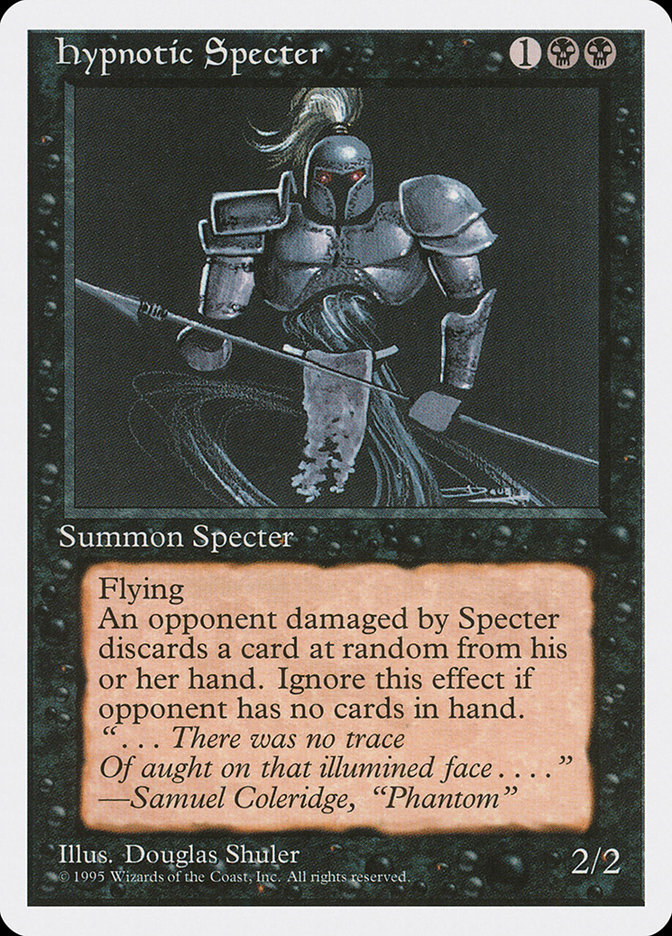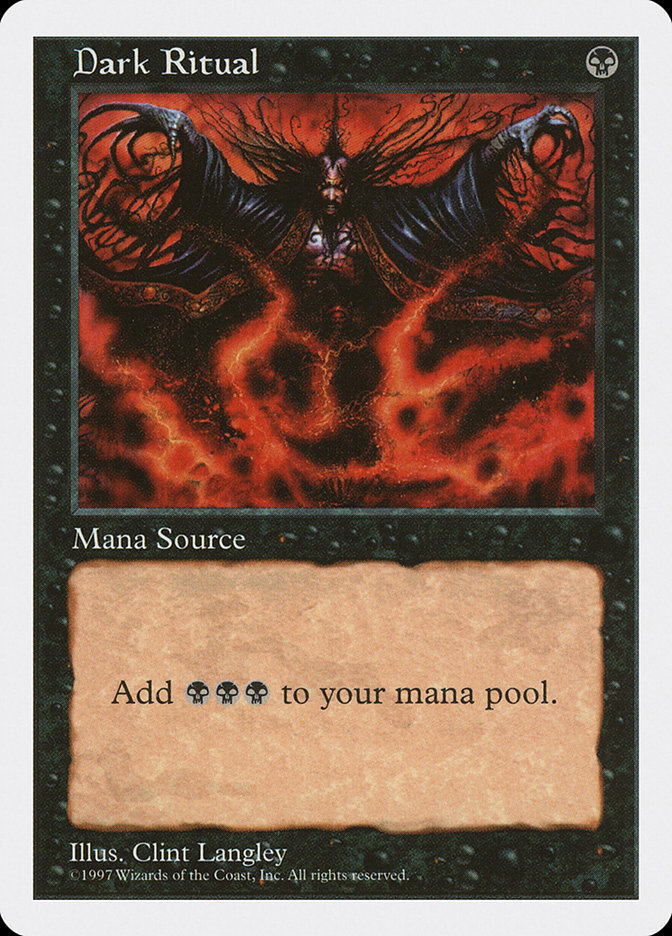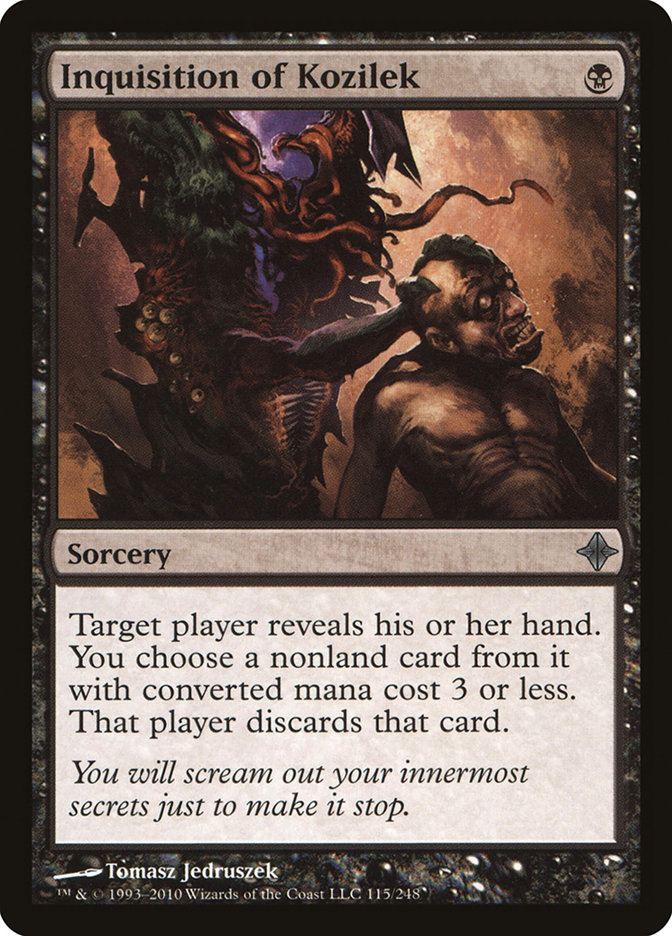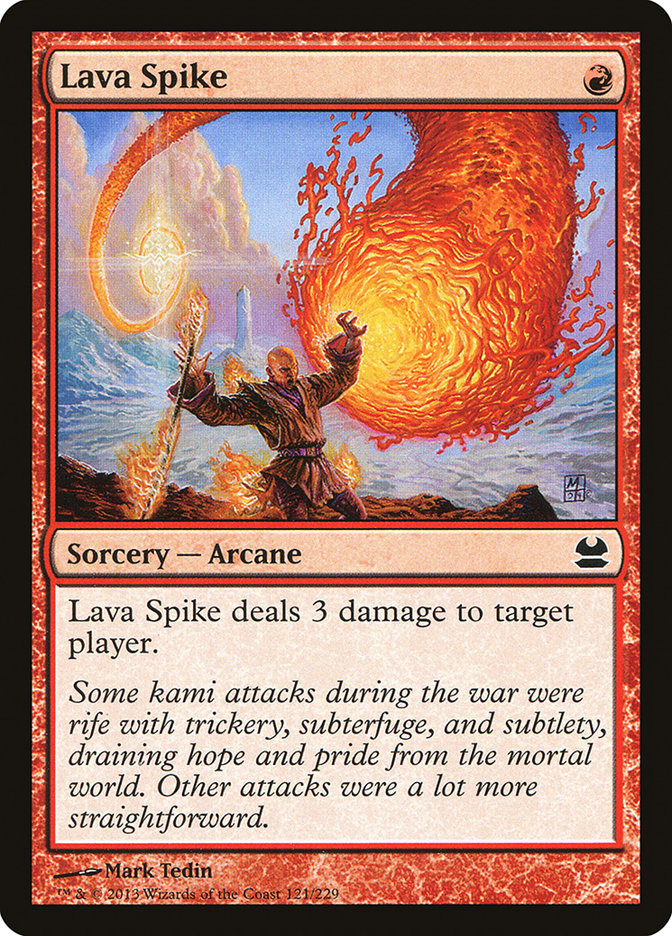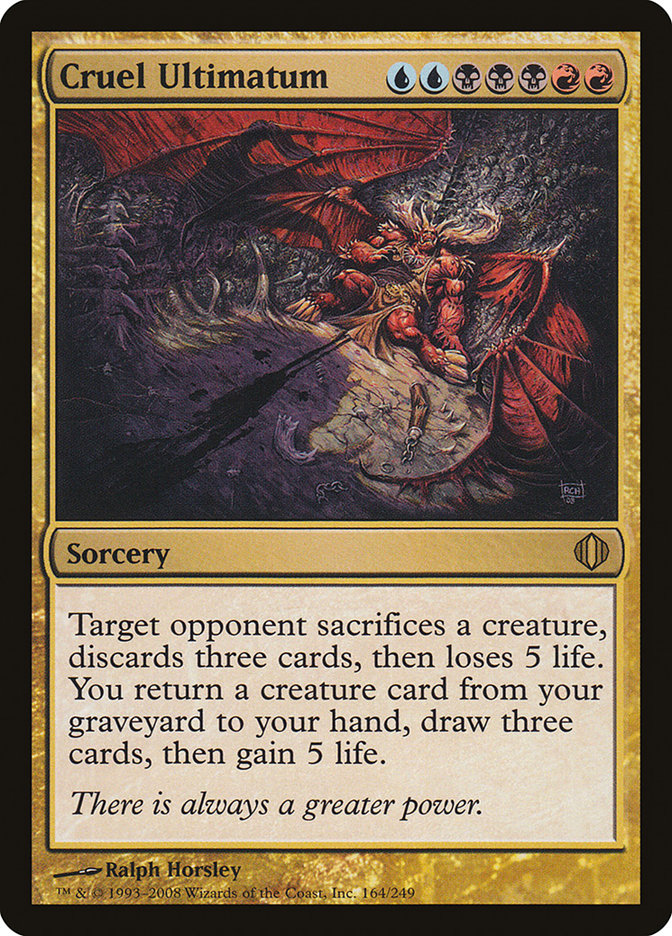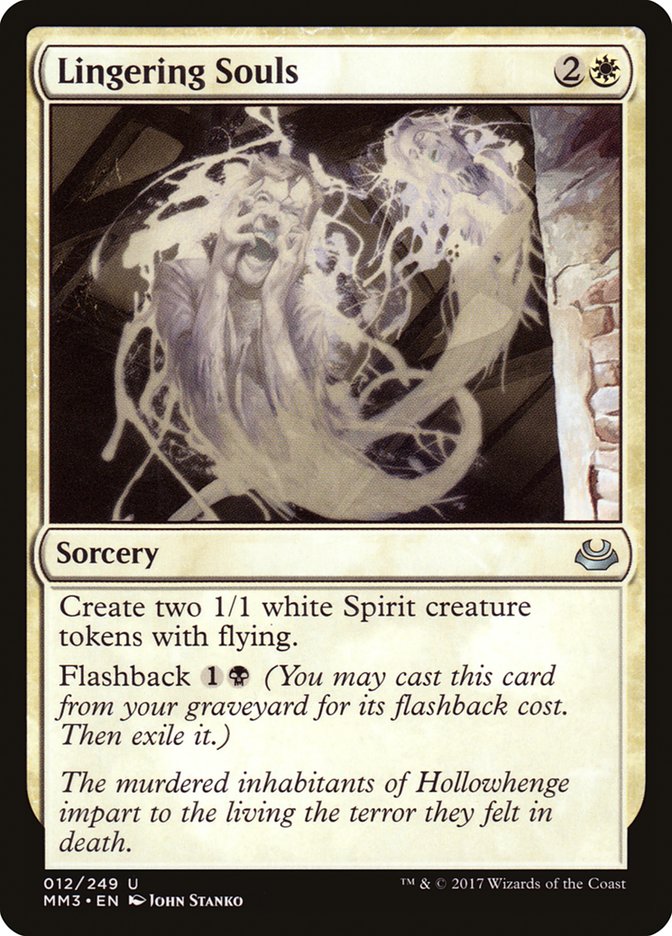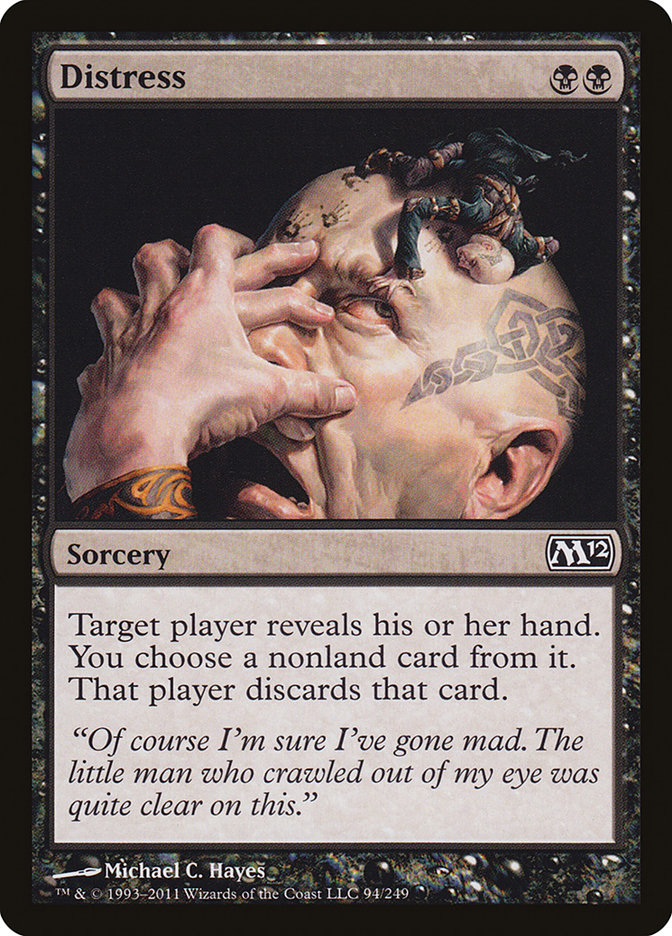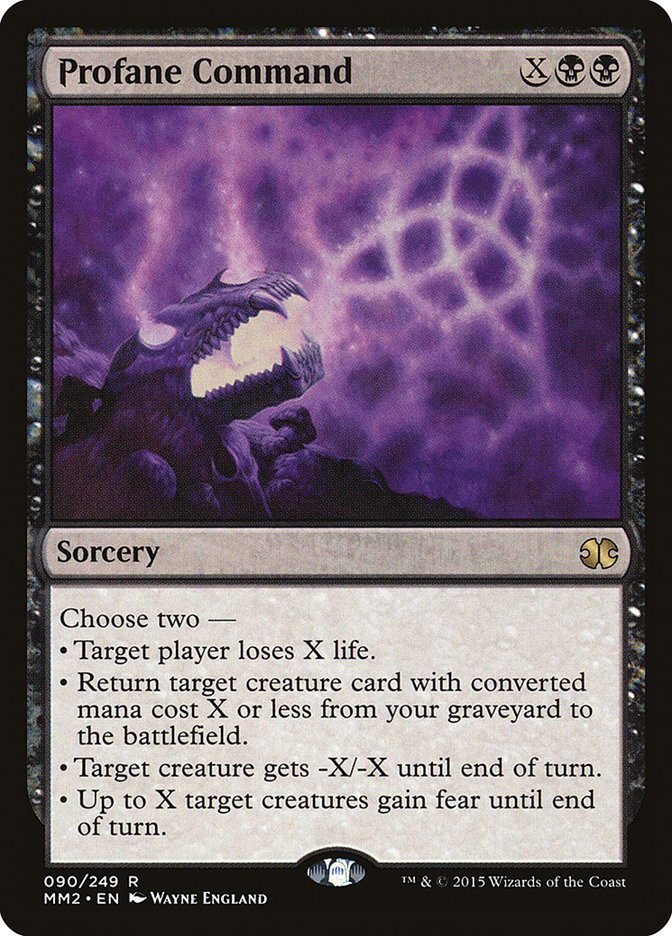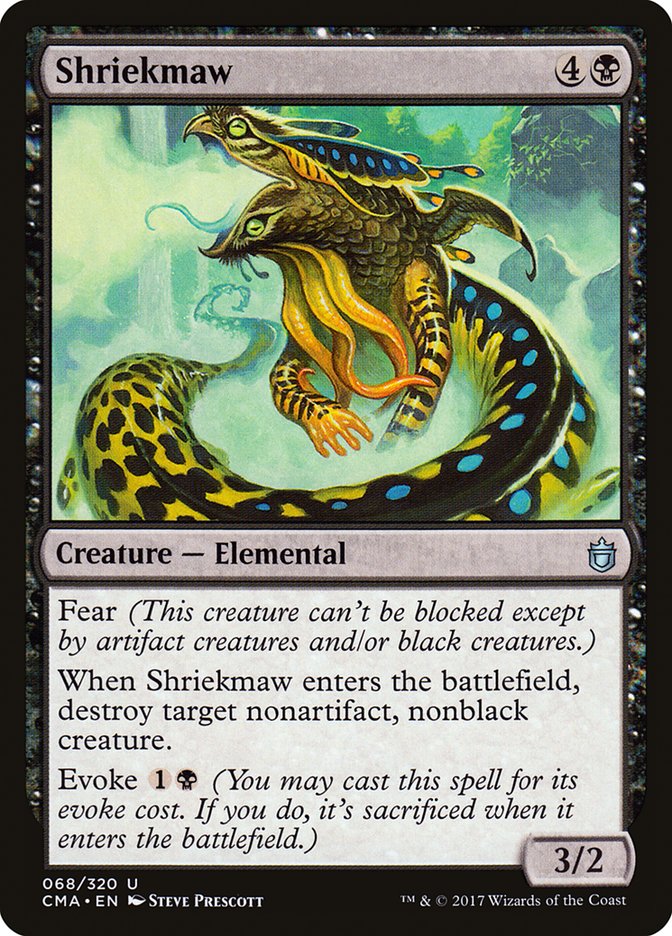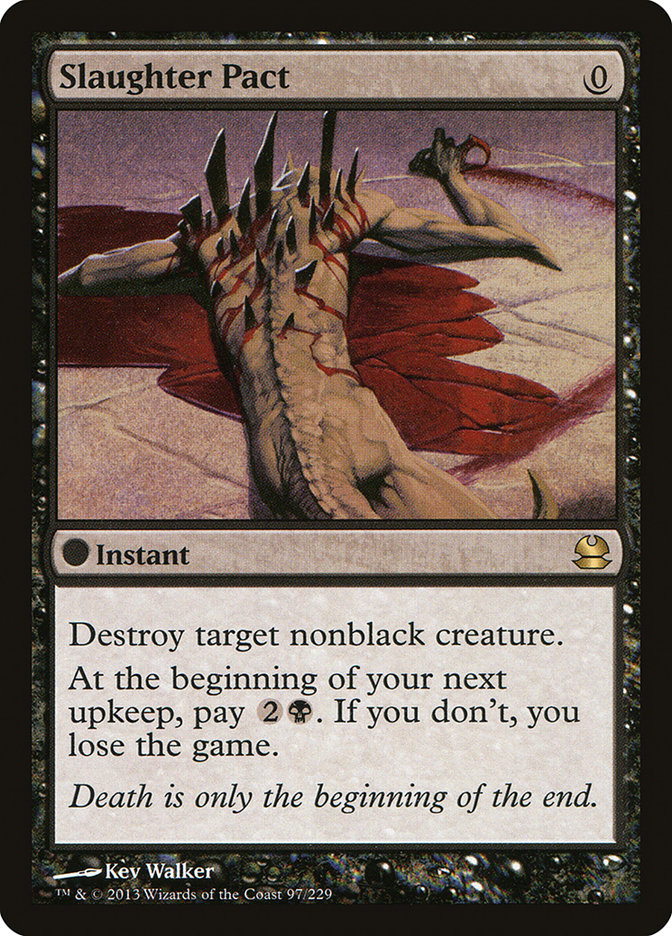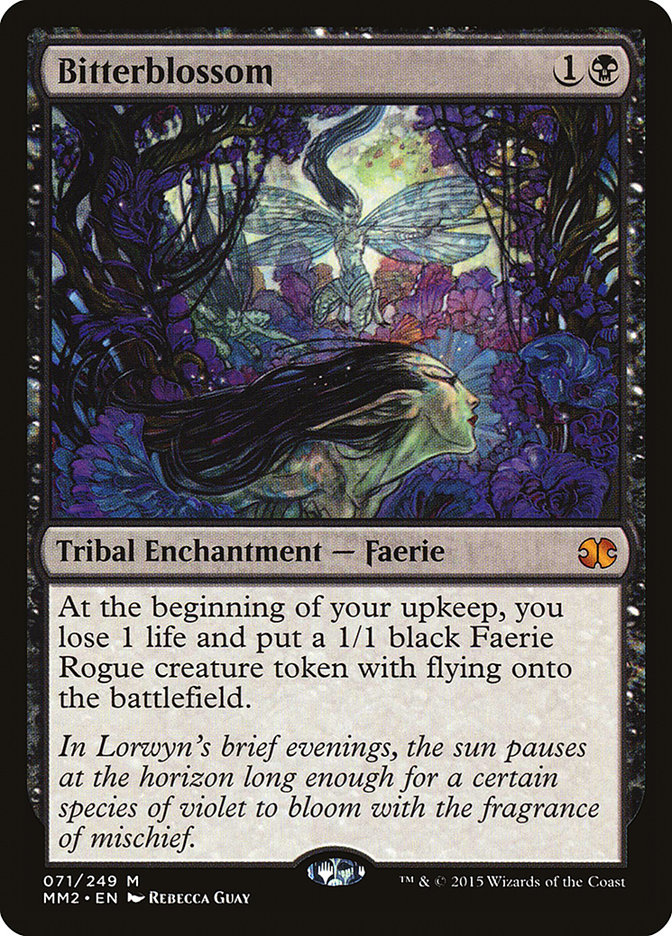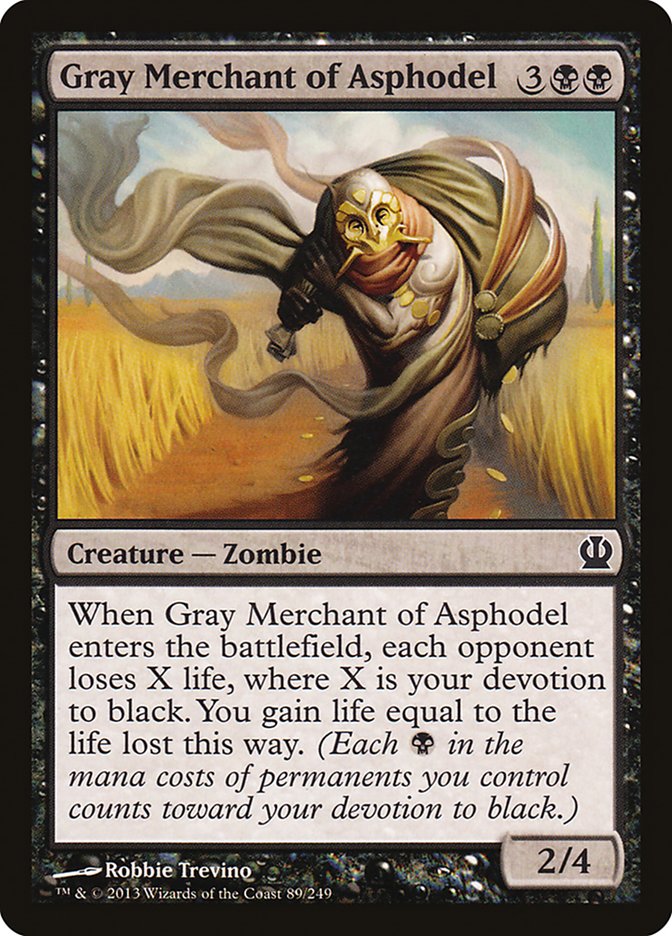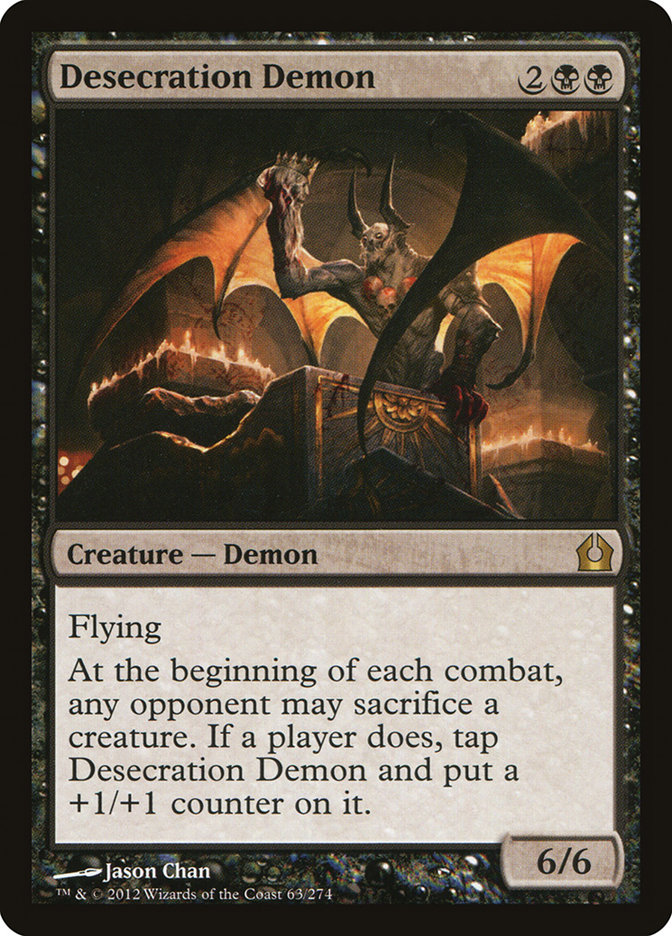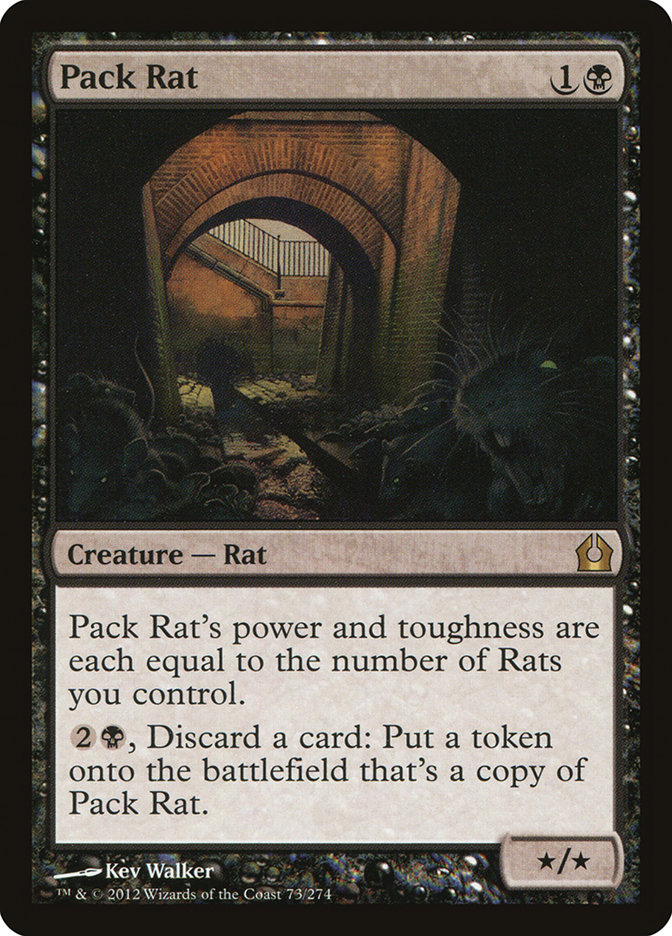The top 25 cards of all-time lists for each color really involve a lot of
balancing of how much to factor in historical impact versus how much to
factor in how powerful the cards would be if they were legal in every
format. For cards that were once legal but are too old for Modern or that
were banned long ago, this comparison isn’t all that hard. It can be a
little tricky, however, looking at cards from supplementary products, such
as Toxic Deluge.
#15: Toxic Deluge
Toxic Deluge was printed during a period in which Commander products were
being subsidized by including busted Legacy staples that you could only get
from these products (and that they would be unlikely to ever print in a
Standard legal set).
How good would Toxic Deluge actually be if it were Standard legal?
It’s confusing, right? Part of the value of Toxic Deluge is that life is
less risky to pay in powered formats, an extra turn of speed is more
valuable, and the tactical applications of Toxic Deluge are quite
important.
For instance, another Commander addition to Legacy, True-Name Nemesis is
difficult to interact with. Having access to a bunch of good answers is an
important part of the format for decks aspiring to use creatures in any
meaningful capacity.
Creatures (15)
Planeswalkers (3)
Lands (21)
Spells (21)

Jonathan Orr’s Sultai list makes great use of Toxic Deluge, rather than
Damnation, largely because of that one-mana discount, but at least
partially because of the interaction with Tarmogoyf. It’s really not hard
to get the game to a spot where your Toxic Deluge is functioning sort of
like a Plague Wind, rather than a Damnation.
Toxic Deluge can even solve some problems that Damnation can’t. For
instance, the card does some amusing things in Vintage:
Creatures (3)
Planeswalkers (3)
Lands (14)
Spells (40)
- 1 Sensei's Divining Top
- 1 Brainstorm
- 2 Mana Drain
- 1 Vampiric Tutor
- 1 Mystical Tutor
- 1 Yawgmoth's Will
- 4 Force of Will
- 1 Mana Vault
- 1 Sol Ring
- 1 Demonic Tutor
- 1 Hurkyl's Recall
- 1 Island
- 1 Time Walk
- 1 Ancestral Recall
- 1 Mana Crypt
- 1 Time Vault
- 1 Merchant Scroll
- 1 Thirst for Knowledge
- 1 Tinker
- 1 Voltaic Key
- 1 Black Lotus
- 1 Mox Emerald
- 1 Mox Jet
- 1 Mox Pearl
- 1 Mox Ruby
- 1 Mox Sapphire
- 1 Ponder
- 2 Thoughtseize
- 1 Nature's Claim
- 1 Blightsteel Colossus
- 2 Mental Misstep
- 2 Flusterstorm
- 1 Toxic Deluge
Sideboard

To begin with, it’s not hard to get your Blightsteel Colossus to survive
your own Toxic Deluge, but if your opponent plays one, you can just Deluge
for eleven. Damnation wouldn’t work against the indestructible Colossus;
however, -11/-11 kills it dead.
Just watch out for Dark Confidant revealing your own…
#14: Sinkhole
You must understand just how different of days those were. There were so many cards dedicated to making people unable to play the game
(whether casting spells or attacking). By contrast, there were relatively
few cards that actually encouraged fighting with creatures at all.
While there have been plenty of solid three-cost land destruction spells
over the years (and almost entirely in the nineties), Sinkhole was the only
really good one for two-mana.
Really?
Okay, look, you know what I mean.
Anyway, Sinkhole’s ability to disrupt people’s mana before they can really
even get their game going is good enough for Legacy and would be seriously
problematic if the card was ever legal in Modern, let alone Standard.
I’m not saying it would be all bad. I’m just saying, there would be a lot collateral damage.
One of my favorite Sinkhole decks of all-time was Chris Pikula’s “Deadguy
Ale,” a B/W land destruction deck with an old-school vibe to it.
Creatures (11)
Lands (23)
Spells (26)

Nantuko Shade may raise a few eyebrows, but the card really does have an
efficient kit for use in a land destruction deck.
If you use most of your resources to obliterate your opponent’s resources,
it doesn’t necessarily leave you with very many cards left in hand to play.
Nantuko Shadow and Cursed Scroll both work really well under these
conditions, allowing you to keep using your mana efficiently turn after
turn.
You laugh, but this guy ruled the skies back in the day. I can’t tell you
how many games were over before they started, thanks to a Dark Ritual +
Hypnotic Specter opening.
And it’s not like Chris was alone on an island. Just check out Paul
Rietzl’s Rock deck from four years later:
Creatures (16)
Lands (22)
Spells (22)
- 1 Umezawa's Jitte
- 4 Hymn to Tourach
- 2 Duress
- 1 Diabolic Edict
- 4 Dark Ritual
- 4 Sinkhole
- 2 Snuff Out
- 4 Thoughtseize
Sideboard

Still four Nantuko Shades, still four Hypnotics, and still four Sinkholes.
If it ain’t broke, don’t fix it…
…and this deck is most certainly not broken.
#13: Inquisition of Kozilek
The list of Inquisition of Kozilek decks throughout the ages spans
basically every format and every archetype. While it has basically always
lived in Thoughtseize’s shadow, it’s pretty unreal how close in power level
the two cards are.
Creatures (7)
Lands (25)
Spells (28)

While Inquisition of Kozilek has won plenty of Pro Tour and World
Championship Sunday matches, it has most commonly been a part of various
Jund and Abzan decks (you know the type…). Instead, I selected Corey’s list
as an example of the strategy of playing Inquisition of Kozilek, but not Thoughtseize, in order to conserve life points (most commonly
in control decks without access to much good lifegain).
When your opponents are Lava Spiking you, those are the moments you really appreciate Inquisition of Kozilek.
Nooooo.
It’s not because it’s a Grixis deck. It’s just objectively true
that this twelfth-place deck is the best example. There are too many first
places, they kind of all cancel out. How many twelfth places has
Inquisition even gotten? Who knows?
There are no mistakes, only happy accidents.
#12: Liliana of the Veil
Liliana of the Veil not cracking the top ten is pretty unreal, given that
she’s easily a top five Planeswalker of all-time, and that’s among
extremely intense competition.
Liliana has appeared in basically every black/x color combination known to
mankind, and sometimes, even not in Jund.
Creatures (10)
Planeswalkers (3)
Lands (25)
Spells (22)

While Liliana’s most common Abzan combo is with Lingering Souls, this list
makes no less good of use of her.
Instead of the graveyard synergies with Lingering Souls, this list features
both Life from the Loam and Punishing Fire, as excellent choices for what
to discard to your Liliana +1 ability.
#11: Thoughtseize
I still just can’t believe how close Inquisition of Kozilek and
Thoughtseize have proven to be. I get that they are similar cards, but that
difference in what they hit is such a different kind of limitation
than the two life. It’s crazy that they are so closely balanced with one
another.
Coercion… was not that good. It did enjoy some success, however. You gotta
break up them combos!
Saving a mana and not hitting lands was a small price to pay; however, the
formats Distress has been legal in have not always been conducive to cards
like it.
Thoughtseize, however?
This card is a little much for a card with so little counterplay.
Admittedly, however, the card has improved its fair share of formats, on
account of just how effectively it allows “fair” decks to interact with
“unfair” decks. For instance:
Creatures (24)
- 4 Llanowar Elves
- 4 Civic Wayfinder
- 1 Boreal Druid
- 4 Tarmogoyf
- 4 Imperious Perfect
- 4 Wren's Run Vanquisher
- 3 Chameleon Colossus
Planeswalkers (2)
Lands (20)
Spells (14)
Sideboard

First of all, shoutout to Profane Command, Shriekmaw, and Slaughter Pact.
All great, great cards.
In a format with Reveillark combo decks, Thoughtseize helped give Gindy and
his Elf deck enough interaction to get him over the finish line. It even
gave him a tool for interacting with opponents that might be wanting to
play Bitterblossom on turn two…
…which brings up a good point. The problem with Thoughtseize isn’t when
the G/B Elves decks play it. It’s when the bad guys get their hands on it.
For instance:
Creatures (12)
Lands (19)
Spells (29)
- 6 Island
- 1 Terror
- 3 Remove Soul
- 3 Broken Ambitions
- 4 Cryptic Command
- 4 Thoughtseize
- 4 Bitterblossom
- 4 Agony Warp
Sideboard

Turn 1: Thoughtseize or Ancestral Vision
Turn 2: Bitterblossom
Turn 3: Spellstutter Sprite or Vendilion Clique
Turn 4: Mistbind Clique or Cryptic Command
Are we having fun yet?
Bitterblossom definitely deserves an honorable mention, of course. Still,
Thoughtseize was just too efficient at letting a deck like this know
everything it needed to do while giving it a level of robustness that made
it nearly unassailable, no matter how hard people tried.
You see, you start out the good guy, the plucky underdog hero, surprising
people with your synergies and strategies. After all, when is Mono-Black
Control ever good?!
Creatures (15)
Lands (25)
Spells (20)
Sideboard

Next thing you know, you’re just some deck Thoughtseizing people on turn
one and taking their only answer to Pack Rat.
Pack Rat was really not that far from this list. Talk about a messed up
Magic card.
Thoughtseize has obviously done very well for itself in Vintage, where the
two life is just so trivial and the ability to hit anything is invaluable.

After all, there are a lot of Vintage cards that cost four or more that are
pretty important to hit with Thoughtseize. As an example, here’s a Power 9
Series winning list of Brian DeMars, using every one of those cards
alongside his playset of Thoughtseize:
Creatures (2)
Lands (14)
Spells (44)
- 1 Sensei's Divining Top
- 1 Tendrils of Agony
- 4 Brainstorm
- 1 Fastbond
- 2 Mana Drain
- 1 Vampiric Tutor
- 1 Mystical Tutor
- 1 Yawgmoth's Will
- 1 Duress
- 4 Force of Will
- 1 Demonic Tutor
- 2 Island
- 1 Time Walk
- 1 Ancestral Recall
- 4 Gush
- 1 Mind's Desire
- 4 Merchant Scroll
- 1 High Tide
- 1 Chain of Vapor
- 1 Black Lotus
- 1 Lotus Petal
- 1 Mox Emerald
- 1 Mox Jet
- 1 Mox Ruby
- 1 Mox Sapphire
- 1 Empty the Warrens
- 4 Thoughtseize

There’s even a Fastbond plus an Ancient Grudge in the sideboard, so it
doesn’t really count as a Grixis deck!


